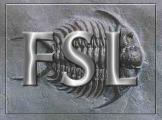Featquery - FEAT Results Interrogation
User Guide

Featquery - FEAT Results Interrogation
| 
|
Featquery is a script which allows you to interrogate FEAT results by defining a mask (or co-ordinates of a single-voxel) in standard-space, highres-space or lowres-space, to get mean, max etc stats values and time-series within that mask or at that voxel position. For example, you might define a standard-space mask for the motor cortex, and Featquery will tell you the mean (and peak) % signal change associated with your modelled experimental paradigm within that area.
First you must select a previously-created FEAT output directory whose results you wish to investigate. You can run multiple queries by changing the Number of FEAT directories. The results of running Featquery will be saved in a directory ("featquery") inside each FEAT directory chosen. If you have already run Featquery on a FEAT directory, a "+" will be appended to the subdirectory name, e.g. "featquery+".
Once you have selected a FEAT directory, a list of all possibly interesting stats images inside that FEAT directory will appear on the Featquery GUI. Turn on the ones you are interested in. (If you turn on filtered_func_data you will be given mean (and max etc) stats values within the defined mask, including searching over time as well as space.)
You must now choose a Mask image. This would normally be a binary image in standard-space, highres-space or lowres-space, with a region-of-interest (ROI), for example, the visual cortex, created by any method. Featquery will automatically detect which space this mask is in (ie standard-space, highres-space or lowres-space) and will transform it into the native lowres space of example_func; of course this can only work if FEAT registration was setup and carried out.
If you want a different mask for each selected FEAT directory, specify a mask name as a relative filename (ie without a "/"). This mask will then be looked for relative to each FEAT directory.
Alternatively, you can specify a single position (in voxels or mm) at which to extract values from the chosen stats images. This still requires a "mask" image to be chosen, as it is relative to this mask image that the co-ordinates have meaning. Thus if you want the co-ordinates to be in lowres space, just select "mask" or "example_func"; if you want to specify standard-space co-ordinates ("Talairach space") then choose "reg/standard". It is wise to be careful here - after running Featquery, have a look at the created featquery/mask image to check that the voxel finally chosen is in a sensible place!
If you leave Create time-series plots turned on, tsplot will be used to create model vs data time series plots (both full time series plots and peristimulus plots) averaged over the mask you have chosen.
If you select Convert PE/COPE values to %, any PE or COPE parameter estimate or contrast values will be converted to percentage change values before reporting. This is achieved by scaling the PE or COPE values by the peak-peak height of the regressor (or mean of relevant regressors' heights in the case of COPEs) and then by dividing by the mean image from filtered_func_data (i.e., baseline intensity). Note that FEAT only carries out the correct regressor-height scaling from FEAT v5.4 onwards; running Featquery on older analyses will simply assume that the scaling is 1, which will not generally be correct for event-related designs run with previous versions of FEAT. Note also that running Featquery on higher-level analyses assumes that the lower-level regressors were unit height.
If you turn on Do not binarise mask (allow weighting) then if your mask is non-binary, its non-zero values will weight all Featquery output values rather than treating the mask as binary. In this case the mask will be scaled such that it's mean (over non-zero voxels) is 1.
If you have selected a mask image in standard or highres space, this will get transformed into lowres space as described above. This involves interpolation; at the edges of the mask there will be a continuous range of values from 1 down to 0. In order to get back to a binary mask, this must be thresholded at some value - the default is 0.5. However, if you want the mask to be slightly more or less inclusive than that default, you can Change post-interpolation thresholding of mask - for example, by reducing the value to 0.3, the final lowres mask will be slightly larger.
If you want to only allow stats values above a threshold to enter into the calculations (of mean, max etc) then turn on Threshold stats images as well as masking and select a value.